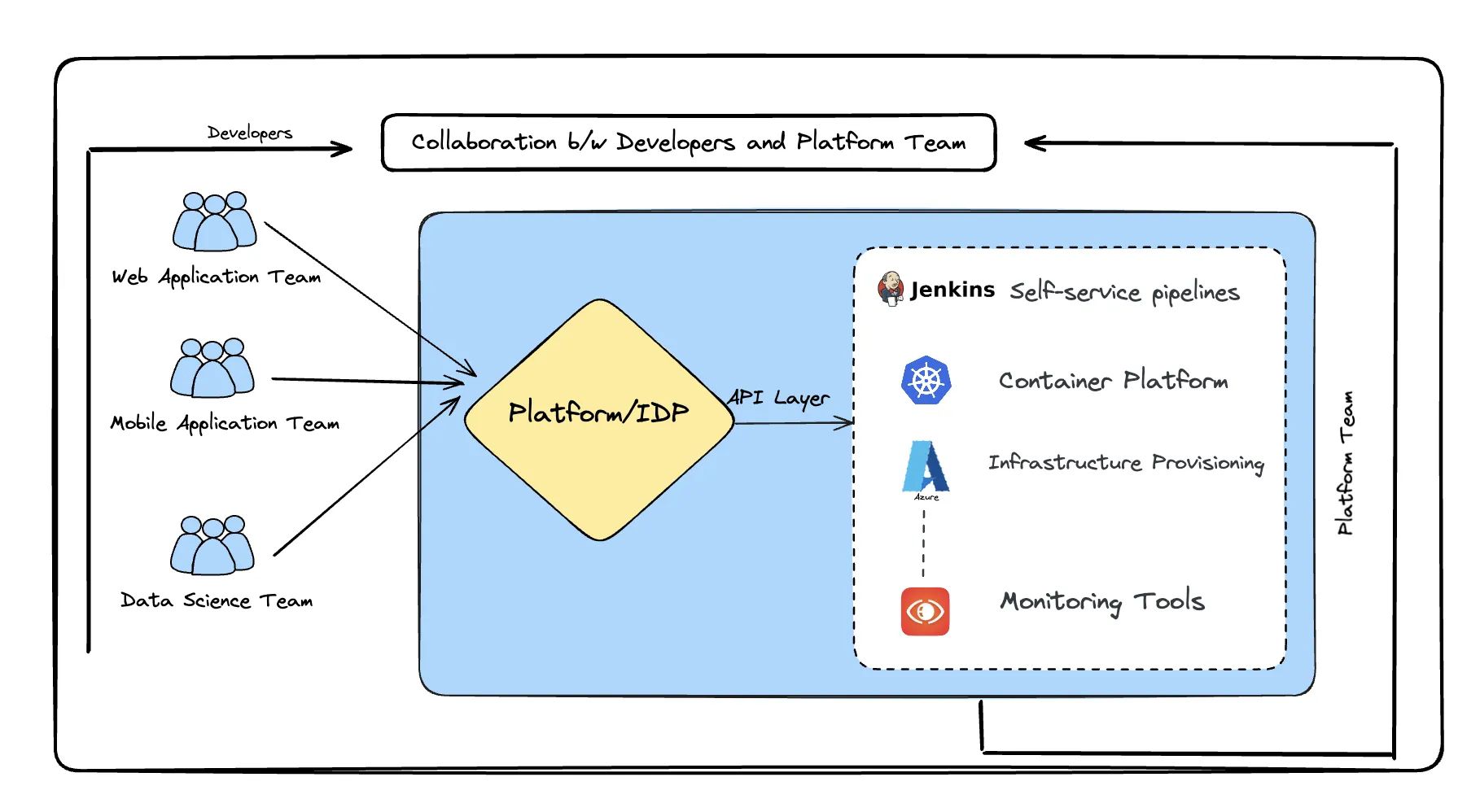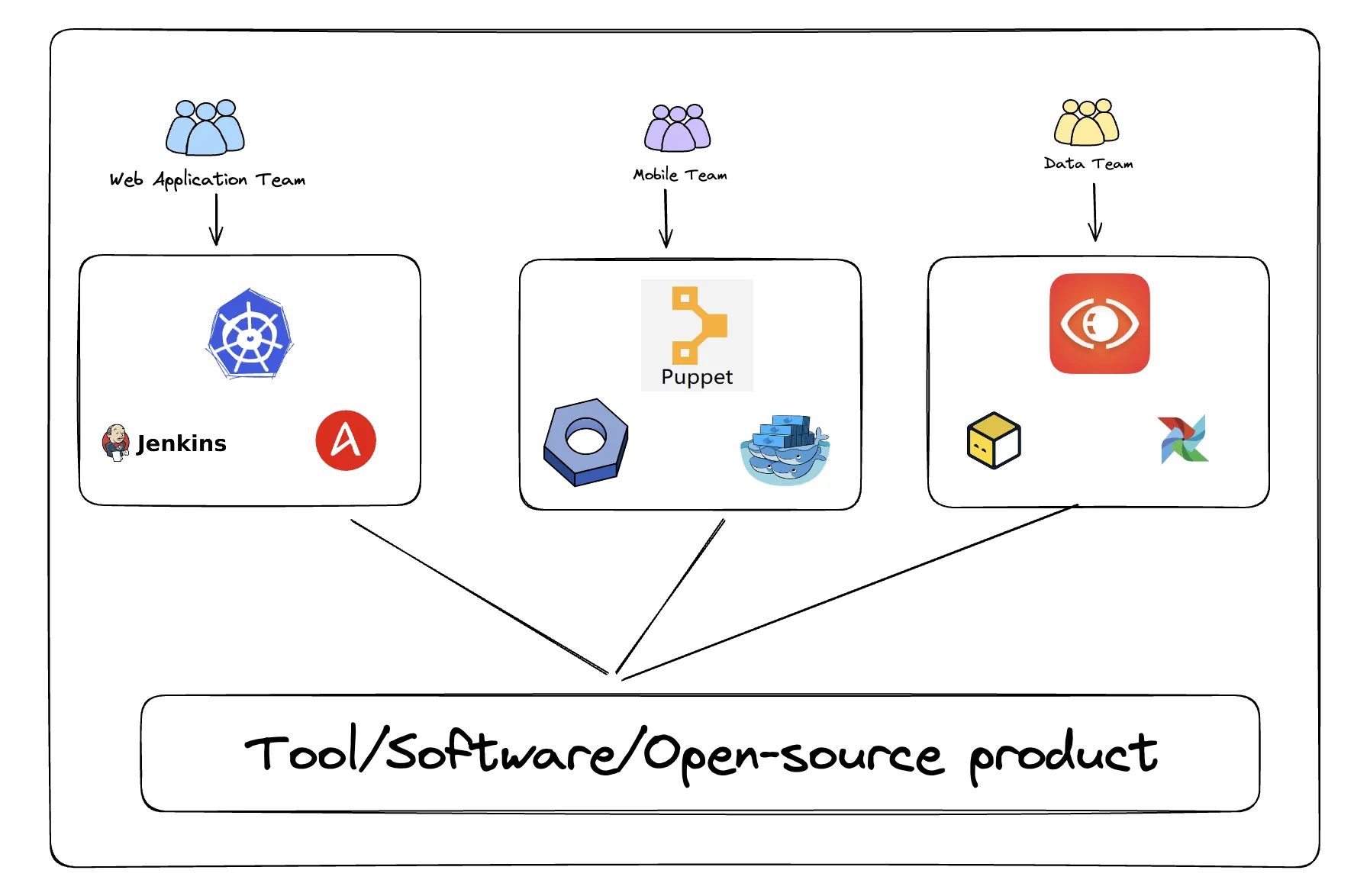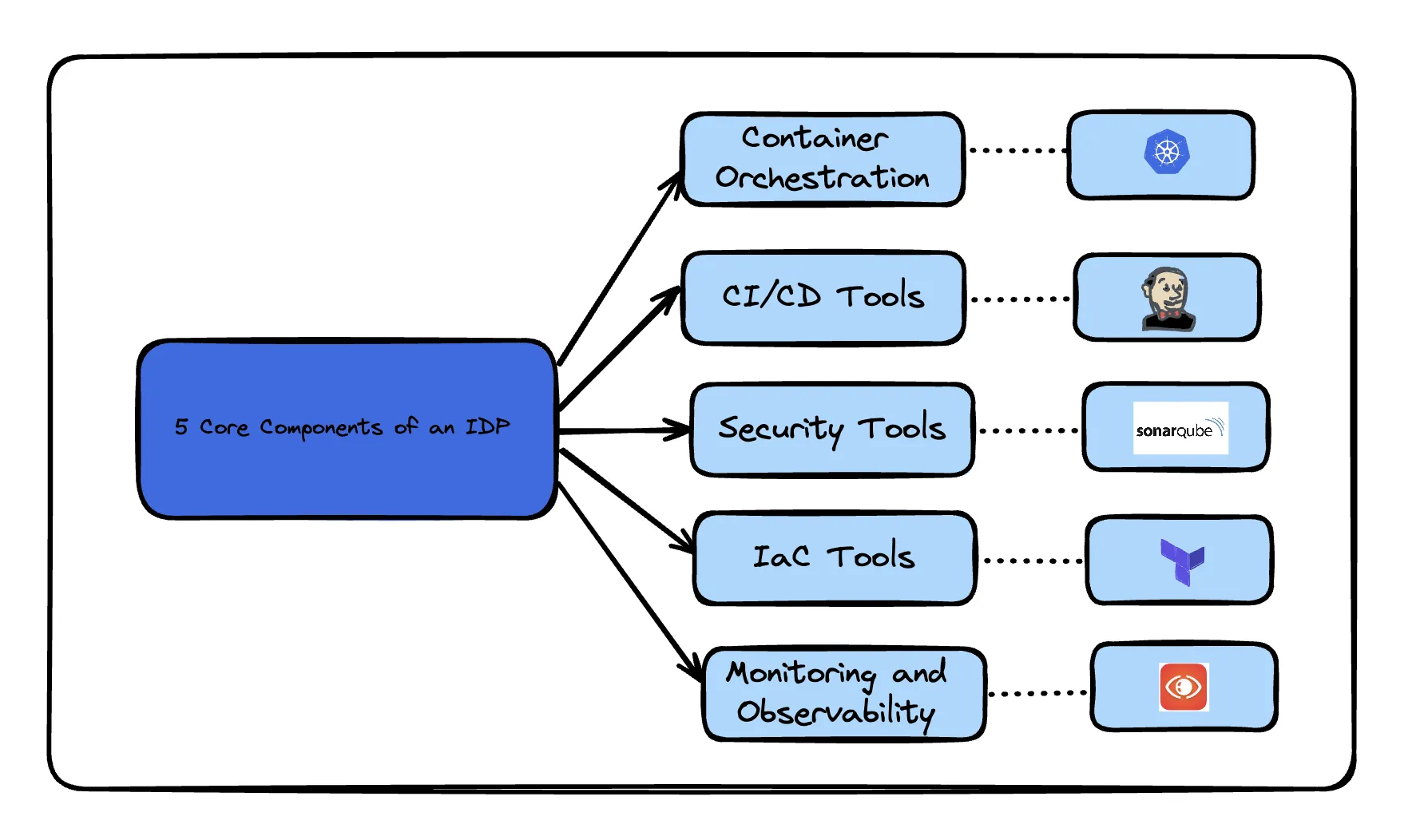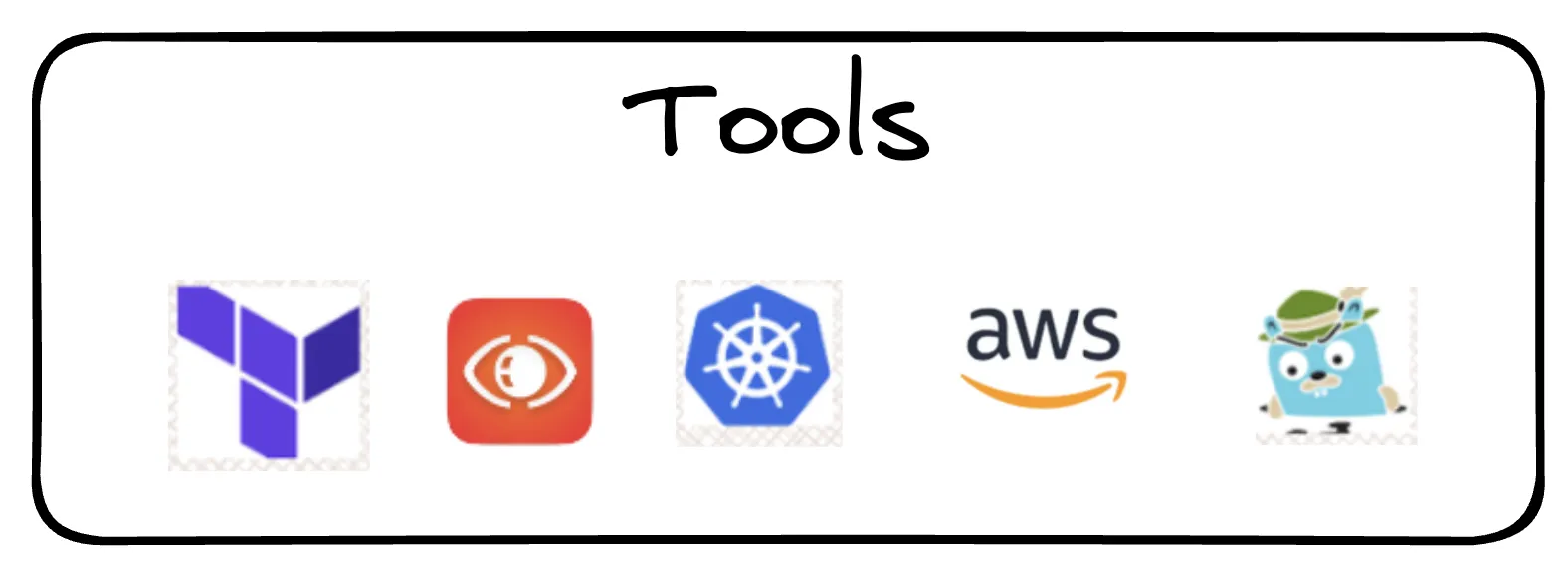In the world of DevOps and cloud engineering, a new buzzword has emerged: Platform Engineering. This concept has sparked discussions across the industry, with professionals debating whether it replaces traditional DevOps or adds value to it. In reality, Platform engineering transforms how software teams work. It builds on DevOps principles to create self-service tools that boost developer productivity. This approach streamlines workflows, enhances security, and cuts operational costs. As organizations seek to scale their software delivery, platform engineering emerges as a critical discipline. Let's explore what platform engineering is and how it empowers developers.
What is Platform Engineering?
Before discussing the definition of platform engineering, lets discuss why we really need this?
Think of a situation when many developers work on different parts of a project, they often need the same tools and services, like databases, servers, or testing environments. Setting up and managing these tools individually for each developer can be time-consuming, error-prone, and inconsistent. The solution is to build a platform where all the tools, services and databases are integrated in one environment which also doesn’t hinder the collaboration between developers and operations.
Platform engineering is a field in software development focused on creating and managing a shared set of tools, services, and environments that developers use to build, test, and deploy their applications. It evolved from DevOps principles, focusing on self-service capabilities for software teams.Think of it as building a "digital workbench" that developers can use to do their jobs more easily and efficiently.
Core Principles of Platform Engineering
The core of platform engineering includes:
- Toolchains: These are integrated sets of development tools that include everything from code editors and version control systems to testing frameworks and deployment automation. Platform engineers ensure these tools work seamlessly together, providing a smooth development experience.
- Workflows: These are standardized processes for developing, testing, and delivering software. Platform engineers design workflows that streamline tasks like code integration, testing, and deployment, making them consistent and repeatable across different projects.
- Internal Developer Platforms (IDPs): These are self-service interfaces that allow developers to access the tools and environments they need without having to understand or manage the underlying infrastructure. IDPs are like a "one-stop shop" where developers can easily set up environments, deploy code, and monitor their applications.
How is Platform Engineering different from DevOps
Generally, platform engineering often get confuse with DevOps. There are some difference between them:
- Platform engineering focuses on building and maintaining a shared platform for developers, while DevOps focus on the collaboration and automation of the entire software delivery process.
- Platform engineers create and manage the tools and environments developers use, whereas DevOps engineers streamline and automate the integration, testing, and deployment of software.
- Outcome: Platform engineering aims to provide a consistent and scalable environment, making development easier, while DevOps seeks to improve the speed and reliability of software delivery by integrating development and operations efforts.
- Usage: Platform engineering provides developers with self-service tools and environments, whereas DevOps involves practices and tools that facilitate continuous integration and continuous deployment (CI/CD).
Overall, Platform engineering aims to remove obstacles in the software development lifecycle. It provides developers with the necessary tools and infrastructure — without requiring them to be infrastructure experts.

This diagram shows a platform, or Internal Developer Platform (IDP), that centralizes various tools and services for different developer teams (like Web, Mobile, and Data Science teams) in an organization. The platform integrates tools such as Jenkins for continuous integration, container platforms for managing applications, infrastructure provisioning tools, and monitoring systems. This setup facilitates collaboration between the platform team and developer teams, allowing developers to focus on building applications while the platform handles the underlying infrastructure and tooling.
Key Principles of Platform Engineering
Platform engineering follows several key principles:
- Automation and standardization: Repetitive tasks are automated, and processes are standardized across the organization.
- Self-service capabilities: Developers can access resources and tools without relying on other teams.
- Golden paths: Predefined, optimized workflows that guide developers through common tasks.
- Continuous improvement: Feedback loops ensure the platform evolves with the needs of its users.
Why Platform Engineering Matters
Imagine a software organization with multiple DevOps teams, each specializing in different aspects of product development. Each team has chosen open-source tools that are well-regarded in the community but come without commercial backing or enterprise version.

- Core Web Application Team (Team A)
- Orchestration: Utilizes Kubernetes to manage containerized applications.
- Infrastructure Provisioning: Uses Ansible for automating infrastructure management.
- Continuous Integration and Deployment: Employs Jenkins to automate software building, testing, and deployment.
- Mobile Application Team (Team B)
- Orchestration: Employs Docker Swarm to manage Docker containers.
- Infrastructure Provisioning: Uses Puppet for configuration management and infrastructure automation.
- Continuous Integration and Deployment: Utilizes Buildbot for automating the build/test cycle and software deployment.
- Data Science Team (Team C)
- Orchestration: Leverages Apache Airflow for managing complex workflows and data pipelines.
- Infrastructure Provisioning: Uses Terraform for declarative infrastructure as code to provision and manage cloud resources.
- Monitoring and Logging: Employs Prometheus for monitoring their applications and infrastructure performance.
These setups exemplify how platform engineering streamlines various specialized tools and processes across different teams, enhancing developer productivity, improving security compliance, reducing operational costs, and accelerating time-to-market.
Platform engineering addresses these critical challenges in modern software development:
- Unified Orchestration: Integrates tools like Kubernetes and Docker Swarm to streamline container management across various development environments, enhancing deployment consistency and minimizing errors.
- Automated Infrastructure Provisioning: Utilizes automation tools such as Ansible, Puppet, and Terraform to ensure consistent, error-free environment setups, allowing for scalable and automated infrastructure management.
- Seamless CI/CD Integration: Incorporates continuous integration and deployment tools like Jenkins and Buildbot into the platform to automate the entire software release process, from code commit to production. This speeds up deployments and reduces the manual workload.
- Workflow Automation: Leverages workflow management tools like Apache Airflow to automate and manage complex processes, enabling more focus on core tasks rather than process orchestration.
- Proactive Monitoring and Logging: Implements monitoring tools such as Prometheus to provide real-time insights into application and infrastructure performance, facilitating proactive issue resolution and system optimization.
IDP and its Components
A key component of platform engineering is the Internal Developer Platform (IDP). This platform acts as an abstraction layer over the complexity of infrastructure and operations. It provides a user-friendly interface—like a UI or API—through which developers can access, configure, and deploy the resources they need without direct involvement from the platform team. This setup ensures that while standardization is maintained, flexibility and autonomy are not compromised.
Components of IDP:
CI/CD Platforms: It automates the software release process, enhancing delivery speed and reliability. Examples: Jenkins, Argo CD etc.
Container Orchestration Platforms: It manages and automates container deployment, scaling, and operations. Examples: Kubernetes, Nomad, Docker Swarm etc.
Security Management Tools: It secures access control, manages secrets, and provides comprehensive identity management. Examples: HashiCorp Vault, AWS Secrets Manager, Azure Keyvault etc.
Infrastructure as Code (IaC) Tools: It manages and provision infrastructure using code for better consistency and scalability. Examples: Terraform, Ansible, Chef, ARM templates, Bicep files and AWS CloudFormation
Observability Stack: It monitors and visualizes applications and infrastructure to ensure optimal performance and health. Examples: SigNoz, Azure app insights
These components collectively empower organizations to automate their infrastructure and development workflows, enhancing both efficiency and security.

The Role of Internal Developer Platforms (IDPs)
Key features of effective IDPs include:
- Infrastructure abstraction: Developers interact with high-level concepts rather than raw infrastructure.
- Environment management: Easy creation and management of development, staging, and production environments.
- Service catalog: A curated list of approved services and tools for developers to use.
- Automated compliance: Built-in checks ensure all deployments meet security and compliance standards.
Using these IDPs, Developers can choose the right level of abstraction to run their applications. Let’s say, you want to build something around Helm charts, Kubernetes, and deploying using GKE. Now, you have the flexibility to just self-serve an environment that comes fully provisioned with everything they need to deploy and test their code, without worrying about where it runs!
Building a Platform Engineering Team
Creating a successful platform engineering team requires careful consideration of roles, skills, and structure:
Essential roles:
- Platform Architect: Designs the overall platform strategy
- DevOps Engineer: Implements and maintains infrastructure and tooling
- Developer Experience (DX) Specialist: Focuses on usability and developer adoption
- Site Reliability Engineer (SRE): Ensures platform reliability and performance
Key skills:
- Strong understanding of cloud technologies and infrastructure-as-code
- Expertise in CI/CD pipelines and automation
- Knowledge of containerization and orchestration (e.g., Docker, Kubernetes)
- Solid grasp of security best practices and compliance requirements
Best practices for team structure:
Embed platform engineers within development teams to ensure close collaboration
Establish clear communication channels between platform engineering and other teams
Implement regular feedback loops to continuously improve the platform
Implementing Platform Engineering: A Step-by-Step Guide
- Assess current infrastructure and processes:
- Audit existing tools and workflows
- Identify pain points and inefficiencies
- Identify key areas for improvement:
- Prioritize based on impact and feasibility
- Set clear, measurable goals for improvements
- Design and build initial toolchains and workflows:
- Start with high-impact, low-complexity projects
- Focus on automating repetitive tasks
- Develop the Internal Developer Platform:
- Create a user-friendly interface for developers
- Implement self-service capabilities for common tasks
- Iterate and refine:
- Collect feedback from developers regularly
- Continuously improve based on usage data and user input
Platform Engineering Tools and Technologies
Platform engineering relies on a variety of tools across different categories:
- CI/CD: Jenkins, GitLab CI, GitHub Actions
- Infrastructure-as-Code: Terraform, Ansible, Pulumi
- Containerization and Orchestration: Docker, Kubernetes
- Monitoring and Observability: SigNoz, Prometheus, Grafana
- Version Control: Git, GitHub, GitLab
- Artifact Management: Nexus, Artifactory
When selecting tools, consider:
Integration capabilities with existing systems
Scalability to meet future needs
Community support and documentation
Alignment with team skills and preferences

Screenshot 2024-08-14 at 10.16.32 AM.webp
Monitoring and Observability in Platform Engineering
Effective monitoring is crucial for platform engineering success. Key metrics to track include:
- Platform uptime and reliability
- Resource utilization (CPU, memory, storage)
- Deployment frequency and success rates
- Developer productivity metrics (e.g., time to deploy)
Observability goes beyond monitoring by providing deep insights into complex systems. It allows platform engineers to understand the internal state of their systems through:
- Distributed tracing
- Log aggregation
- Event correlation
Leveraging SigNoz for Platform Engineering
SigNoz is an open-source monitoring and observability solution that's particularly well-suited for platform engineering. It offers:
- End-to-end tracing for complex, distributed systems
- Real-time performance monitoring
- Custom dashboards for different stakeholders
- Alerts and anomaly detection
To integrate SigNoz with your applications, you can refer to the specific guides based on the programming language you are using:
- For JavaScript (Node.js) applications, use this guide: SigNoz JavaScript Integration
- For Python applications, follow this guide: SigNoz Python Integration
- If you are using Golang, here’s the integration guide: SigNoz Golang Integration
- For Java applications, you can start here: SigNoz Java Integration
SigNoz Cloud is the easiest way to run SigNoz. Sign up for a free account and get 30 days of unlimited access to all features.
You can also install and self-host SigNoz yourself since it is open-source. With 24,000+ GitHub stars, open-source SigNoz is loved by developers. Find the instructions to self-host SigNoz.
SigNoz integrates seamlessly with popular platform engineering tools, providing a unified view of your entire software delivery pipeline.
Challenges and Best Practices in Platform Engineering
Common challenges in platform engineering include:
- Resistance to change from development teams
- Balancing standardization with flexibility
- Keeping up with rapidly evolving technologies
Best practices to address these challenges:
- Focus on developer experience: Make the platform intuitive and valuable for developers.
- Start small and iterate: Begin with pilot projects and expand based on success.
- Invest in education and training: Help teams understand the benefits and use of the platform.
- Measure and communicate value: Use metrics to demonstrate the impact of platform engineering initiatives.
Future Trends in Platform Engineering
As platform engineering evolves, several trends are emerging:
- AI-powered platforms: Machine learning algorithms will optimize resource allocation and suggest improvements.
- Shift-left security: Security and compliance will be integrated earlier in the development process.
- Low-code/no-code integration: Platforms will incorporate more visual, drag-and-drop interfaces for configuring workflows.
- Edge computing support: Platforms will extend to support distributed applications at the edge.
These trends will further empower developers, making software delivery even faster and more efficient.
Key Takeaways
- Platform engineering focuses on creating self-service tools that boost developer productivity.
- Internal Developer Platforms (IDPs) are central to effective platform engineering.
- Successful implementation requires a dedicated team, careful tool selection, and a focus on user experience.
- Monitoring and observability, powered by tools like SigNoz, are crucial for platform performance and improvement.
- The future of platform engineering includes AI integration, enhanced security, and support for emerging computing paradigms.
FAQs
How does platform engineering differ from DevOps?
Platform engineering builds on DevOps principles but focuses specifically on creating self-service platforms for developers. While DevOps aims to break down silos between development and operations, platform engineering creates tools and processes that empower developers to work more independently.
What skills are essential for a platform engineer?
Key skills for platform engineers include:
- Strong knowledge of cloud technologies and infrastructure-as-code
- Experience with CI/CD pipelines and automation
- Understanding of containerization and orchestration
- Familiarity with monitoring and observability tools
- Excellent communication skills to work with various stakeholders
How can organizations measure the success of their platform engineering initiatives?
Organizations can measure platform engineering success through:
- Developer productivity metrics (e.g., deployment frequency, lead time for changes)
- Platform adoption rates among development teams
- Reduction in operational costs and time-to-market
- Improved security and compliance metrics
- Developer satisfaction surveys
What are the key considerations when building an Internal Developer Platform?
When building an IDP, consider:
- User experience and ease of use for developers
- Integration with existing tools and workflows
- Scalability to support growing development teams
- Security and compliance requirements
- Flexibility to adapt to changing technologies and needs
